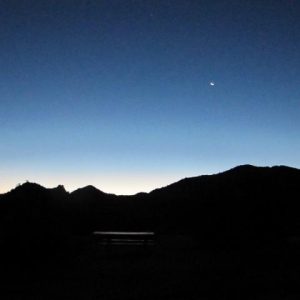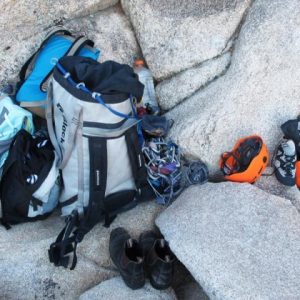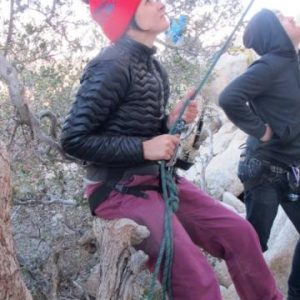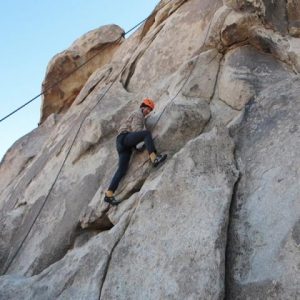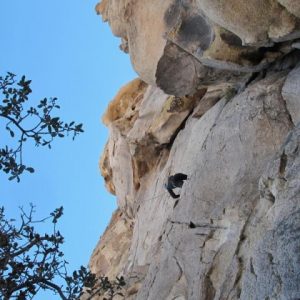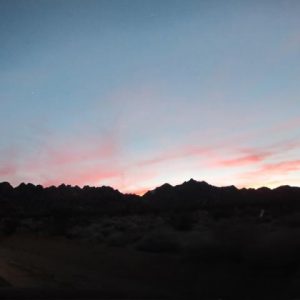This year, I opted to skip a traditional Thanksgiving festivities and head to Joshua Tree National Park for some high-desert camping and climbing with some of my closest friends. I was planning to do a little shoot while I was there, but I decided to just unplug and take the weekend off. I know, crazy.
We hired a private guide from Joshua Tree Rock Climbing School (thanks Scott!) and just let the posi vibes envelope us. It felt so good to be outside challenging ourselves that we forgot all about discounts on Black Friday, deals on Cyber Monday and the rest of the static that clogs our feed this time of year.
Joshua Tree is a pretty magical place to visit and basically a climber’s paradise boasting more than 400 monzogranite formations (fancy rough granite) and 8,000 routes complete with traditional-style crack, slab, and steep-face climbing. BTW, I am no expert on climbing or bouldering (I had only climbed in a gym up until this point) but since I have been writing about it for the last decade, I decided it was time to FINALLY getting my ass out there and test my skills. Besides actually being pretty decent at climbing, I earned the name “Belayoncé” from my crew, so I think that means I am official.
In my humble opinion, this is the best time of year to camp in Joshua Tree because it is not too cold and the death heat of the summer/fall has subsided. Wildflower season in the spring is also pretty tight, but it naturally attracts everyone and their mom to the park. From October to May, all the sites inside the park are first-come, first-serve, but you can reserve spots at Black Rock Campground, Indian Cove Campground, and Cottonwood Campground, plus there is BLM land for overflow a few miles away.
Here are a few fun facts about Joshua Tree straight from the horse’s mouth:
– Humans have occupied the area encompassed by Joshua Tree National Park for at least 5,000 years. The first group known to inhabit the area was the Pinto Culture, followed by the Serrano, the Chemehuevi, and the Cahuilla.
– The park encompasses nearly 800,000 acres, including 501 archaeological sites, 88 historic structures, and 19 cultural landscapes, and houses 123,253 items in its museum collections.
– Joshua Tree became a national monument in 1936, and was elevated from national monument to national park status in 1994.
– The park includes parts of two deserts, each an ecosystem thats characteristics are determined primarily by elevation: the higher Mojave Desert and lower Colorado Desert.
– The reptiles of Joshua Tree National Park include one tortoise, 18 lizards, and 25 varieties of snakes.
– When cornered by a predator, a tarantula will rub its hind legs over its abdomen, brushing hairs into its enemy’s eyes.
– Joshua Tree is crisscrossed with hundreds of faults, and is a great place to see raw rocks and the effects of earthquakes. The famous San Andreas Fault bounds the south side of the park and can be observed from Keys View.
Happy Camping, Jeanine

